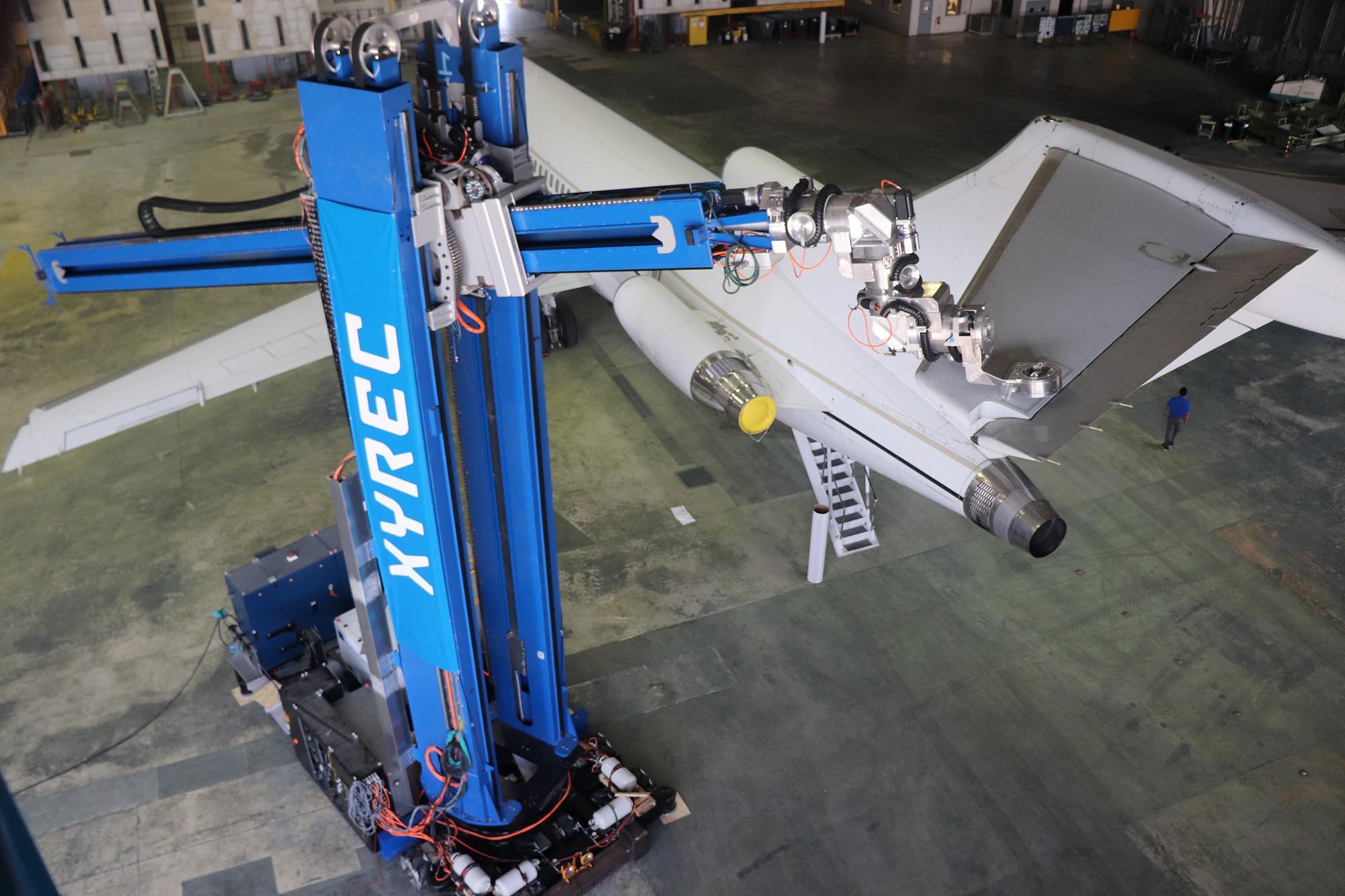Robots for Greener Aircraft Painting and Stripping Make North American Debut

A Dutch robotics specialist with sustainable, automated solutions for both painting and stripping aircraft is opening its first operations in North America at the Port San Antonio campus. Xyrec will occupy a custom-built, 7,000 ft.2 facility at the Port’s large aerospace complex, nestled near companies like Boeing, StandardAero and GDC Technics.
Its newest offering may soon prove enticing to MROs and airlines in the region looking to make the process of de-painting aircraft more efficient and environmentally friendly. According to Xyrec, its Laser Coating Removal (LCR) robot can reduce turnaround time by up to 60% and reduce or entirely eliminate environmental and health hazards involved in traditional aircraft de-painting processes.
Developed in partnership with Southwest Research Institute, the LCR robot system is equipped with a high-powered laser mounted on a robotic arm and mobile platform that can rapidly strip paint from any size aircraft with micro-level precision without impacting the airframe’s integrity. The robot measures more than 72 ft. when fully extended and stands on multi-directional wheels, which enables it to move around within a hangar or relocate to other facilities within an aircraft maintenance complex. It features a built-in color recognition and control system that allows it to strip both metal and composite surfaces accurately, including selective stripping.

Xyrec says traditional methods of aircraft de-painting involve soaking airframes with large amounts of solvents followed by hands-on scrubbing by technicians, which is costly, labor-intensive, can pose health hazards to personnel and creates a significant environmental impact. The LCR system vacuums paint particles as the laser passes over the aircraft surface, so as paint is removed, particles are contained in a sack that can be disposed of easily. According to Xyrec, this results in only around two lb. of waste in powder form for a widebody aircraft compared to approximately 475 gallons of chemicals and 3,700 gallons of water generated by traditional de-painting methods.
In addition to eliminating the need for storage, handling and disposal of these chemicals, Xyrec says the process eliminates up to 30 tons of carbon dioxide emissions per aircraft that would be generated through chemical-based methods.
Last year Xyrec debuted its Automated Paint Robot (APR), which can print aircraft livery designs on an aircraft fuselage more efficiently than through traditional masking and spray gun methods. It says the APR can sand the fuselage, clean it after the paint has been stripped, spray primer and clear coatings, and dry the clear coatings in just two hours. Xyrec says the robot can reduce labor costs by 80% and save up to 30% of paint.
According to Xyrec president and CEO Peter Boeijink, the new San Antonio location “brings together the essential ingredients we need to succeed,” including access to Southwest Research Institute’s robotics team and the opportunity to work with aviation customers located at the Port. “This combination of skills, location and market connections put us in a very strong position to compete globally,” adds Boeijink. “The fabrication capability will also allow us to showcase our product in San Antonio while we develop additional technologies that we can sell to a global clientele.
Boeijink says the LCR system will be available in four sizes, ranging from small aircraft to the Airbus A380. Xyrec plans to announce its launch customer for the LCR soon.


